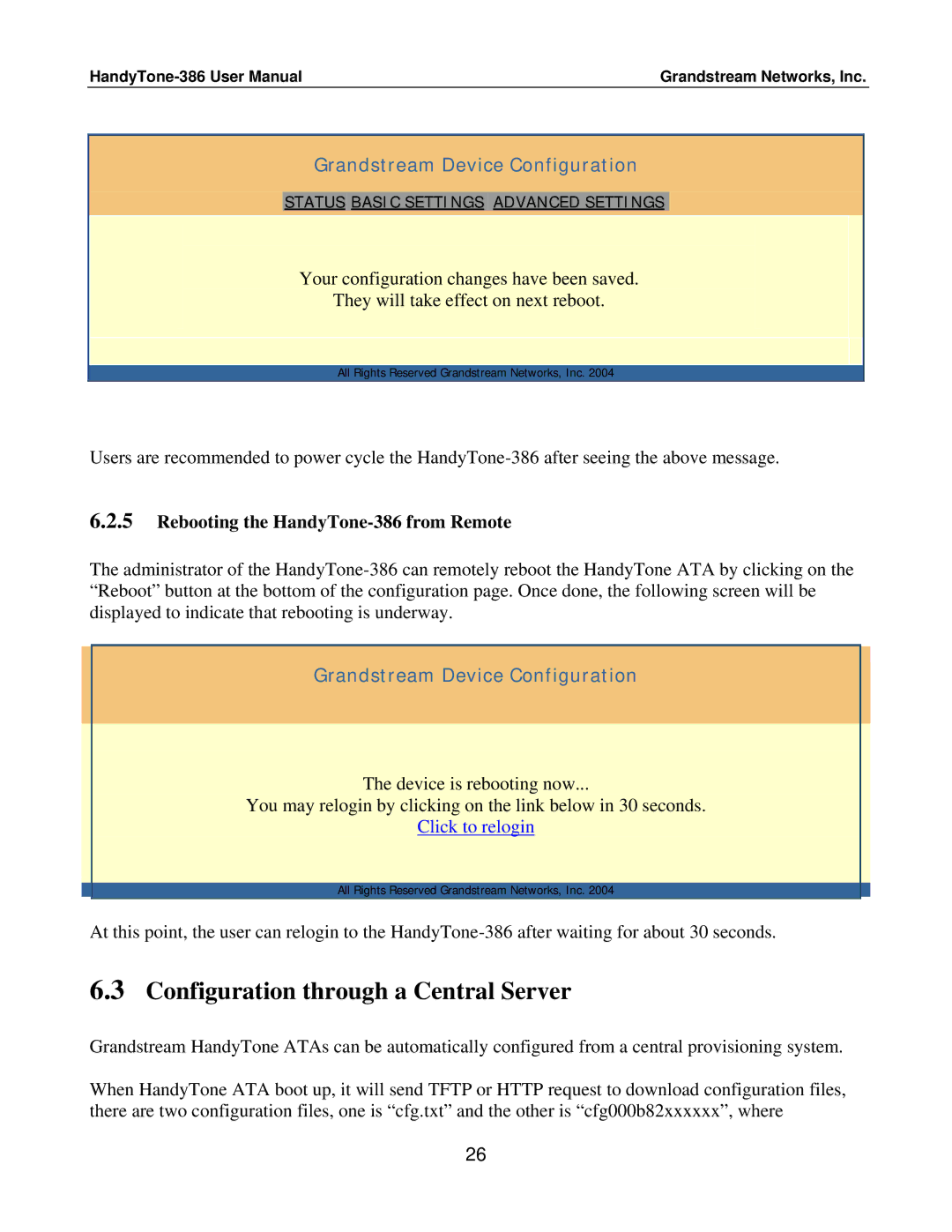HandyTone-386 specifications
Grandstream Networks, a prominent player in the VoIP (Voice over Internet Protocol) industry, offers a range of innovative communication solutions. Among its noteworthy products is the HandyTone-386, a versatile analog telephone adapter (ATA) that seamlessly connects traditional analog telephones or fax machines to an IP network. This device is ideal for both home and office use, making it a popular choice for users looking to upgrade their telephony system without replacing existing hardware.The HandyTone-386 is characterized by its compact design and user-friendly interface. It features two FXS ports, allowing users to connect two separate analog devices, such as home phones or office lines. This dual-port configuration enables simultaneous usage, ensuring that both lines can operate without interference, making it an efficient solution for small businesses or multi-line households.
One of the standout features of the HandyTone-386 is its support for multiple voice codecs, including G.711, G.726, and G.723. These codecs ensure high call quality by adapting to varying network conditions. Additionally, the device supports both SIP and IAX2 signaling protocols, providing flexibility in network configuration and interoperability with various VoIP service providers.
Security is a critical concern in today's digital landscape, and Grandstream addresses this with robust security features in the HandyTone-386. It offers encryption protocols such as SRTP for voice calls and TLS for signaling, protecting sensitive communications from potential threats and eavesdropping.
The HandyTone-386 also comes equipped with advanced telephony features, including caller ID, call waiting, three-way calling, voicemail, and call transfer capabilities. These features enhance the overall user experience and provide more functionality than traditional landline systems.
Moreover, the device’s simple web-based management interface simplifies setup and configuration, allowing users to manage their devices easily. It also supports DHCP for dynamic IP assignment and can be configured for static IP settings if required.
In conclusion, the Grandstream Networks HandyTone-386 exemplifies a powerful tool for those looking to modernize their telephony experience while leveraging existing analog equipment. With its dual FXS ports, support for multiple codecs, comprehensive security, and advanced features, the HandyTone-386 remains a reliable choice for users seeking flexibility, quality, and ease of use in their voice communication needs. Whether for personal or business use, this ATA serves as a gateway to the world of VoIP technology.

